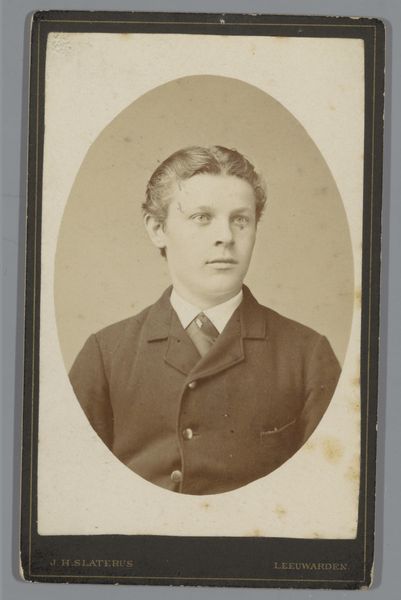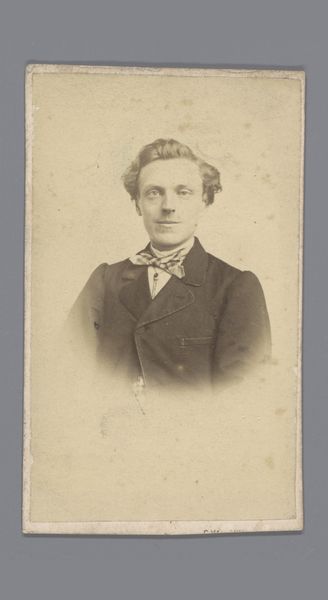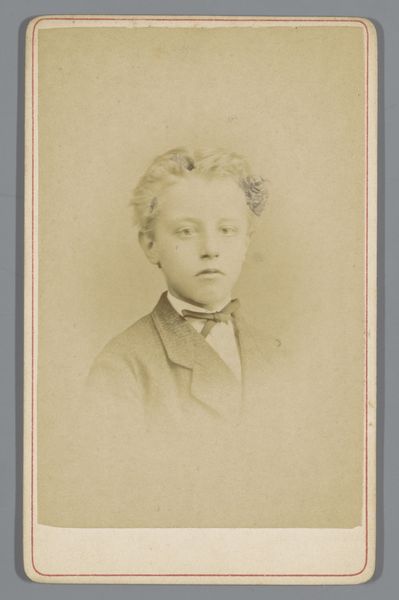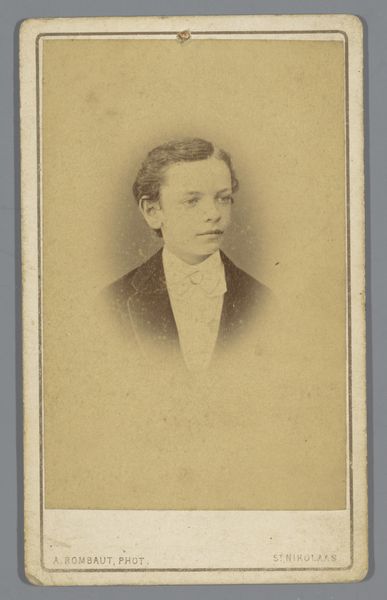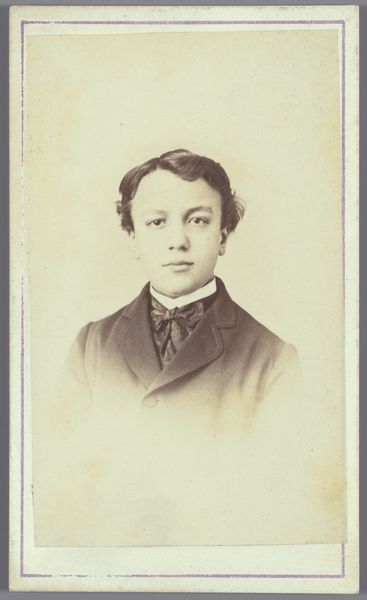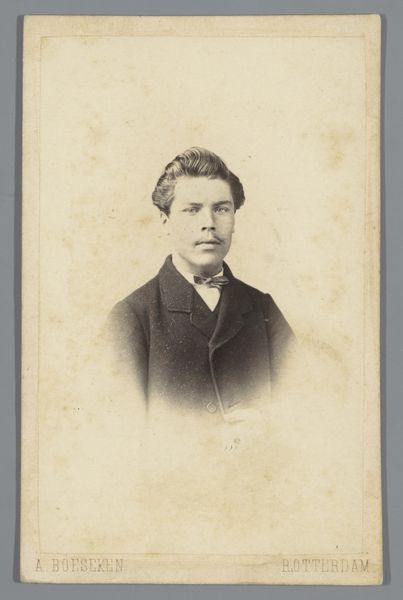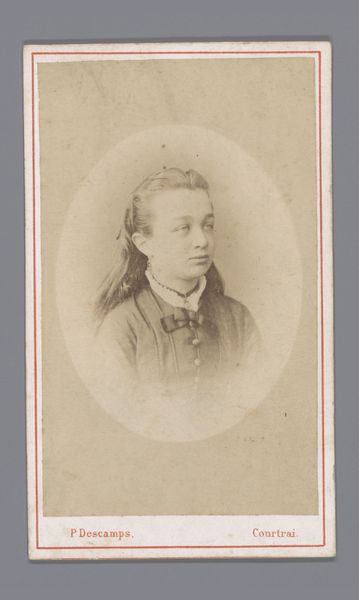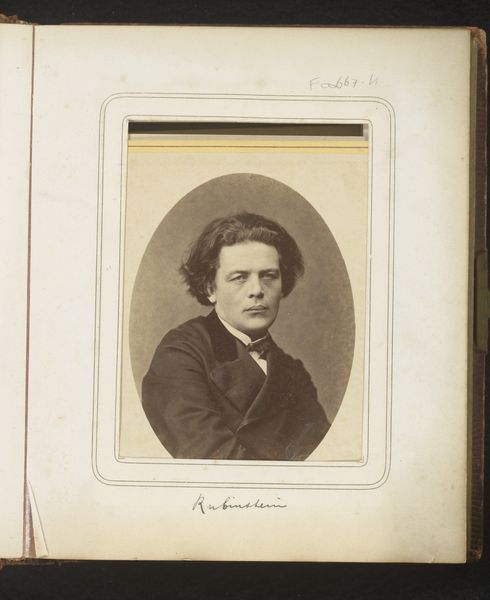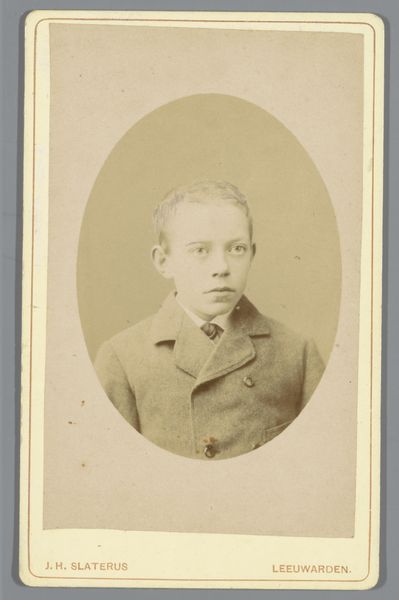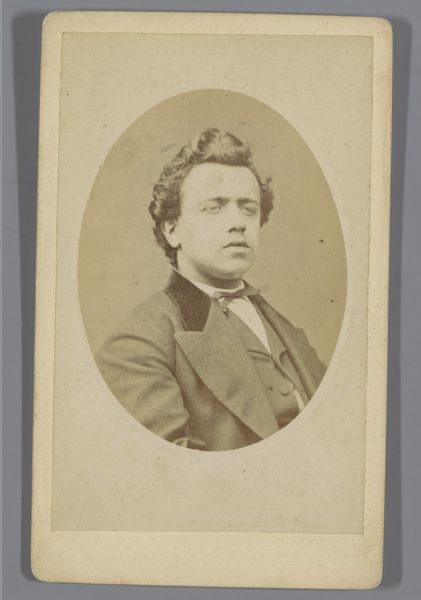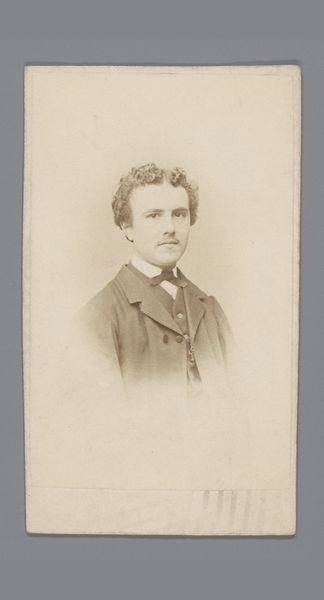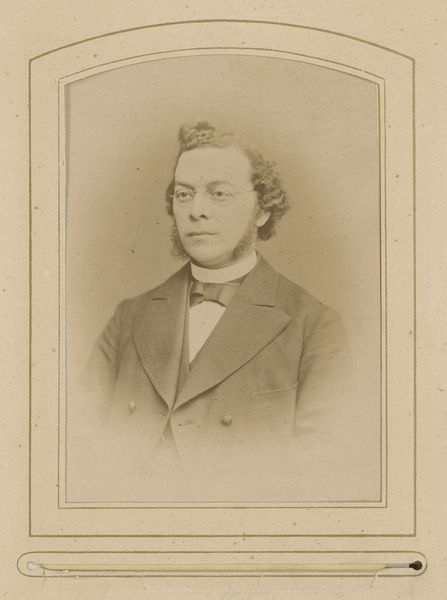
Portret van componist en pianist Anton Grigorevich Rubinstein 1854 - 1859
0:00
0:00
Dimensions: height 101 mm, width 63 mm
Copyright: Rijks Museum: Open Domain
Editor: Here we have Jean Baptiste Feilner’s portrait of Anton Grigorevich Rubinstein, likely a daguerreotype from the late 1850s. It has such a wonderfully muted and classical feeling. What strikes you about this image? Curator: This portrait gives us a powerful glimpse into 19th-century cultural elitism. The photographic techniques, even the poses, served to reinforce existing social hierarchies. I wonder, how might Rubinstein's identity as a Russian Jewish composer have been negotiated and perhaps even complicated through this very formal, Western European mode of portraiture? Editor: That's a compelling point. I hadn't considered the inherent tension there. Do you see any visual clues within the portrait itself that hint at this negotiation? Curator: Notice the carefully constructed 'artistic' disarray of his hair. This bohemian aesthetic, embraced by Romantic composers, offered a space to both conform and subtly resist the rigid social expectations of the time. The almost severe gaze, however, could be interpreted as a way to assert status. This begs the question: was the "tortured artist" trope, often celebrated, used strategically to both gain acceptance and retain a sense of "otherness"? Editor: That’s fascinating, it really makes you think about the layers of identity embedded in even seemingly straightforward portraits. Curator: Exactly! Art doesn't exist in a vacuum. Analyzing it through the lens of social and political context unlocks so much richer meaning. Editor: I’ll definitely remember to dig deeper into these power dynamics next time! Curator: Likewise, this conversation reminded me of the critical role of photographic technologies in the era of colonialism and empire. Thank you.
Comments
No comments
Be the first to comment and join the conversation on the ultimate creative platform.

